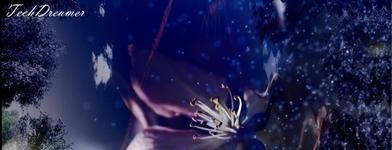But before I can explain how to have Lucid Dreams at will you will need to understand the Neurobiological causes for the loss of consciousness associated with dreams. |
|
Results 1 to 25 of 35
Hybrid View
-
06-30-2009 05:50 AM #1
I may have found the Key to Lucid Dreams: Ground breaking Research
Last edited by I H8 Reality; 06-30-2009 at 09:13 PM.
-
06-30-2009 11:06 AM #2
Interesting. So is this just an hypothesis? Are you going to test it? Or are you just putting it out there for us to test? I for one will not be shocking my brain to try and induce a lucid dream unless you can show me statistically that it will work more often than not. Interesting idea none the less, and thank you for your research efforts.
-
06-30-2009 05:22 PM #3
I either have to build the tDCS myself or buy one. Problem is most companies that sell it require you to have some medical degree to buy it.
Heres a video of some guy that built one.
http://www.youtube.com/watch?v=SymQqZYiVyA
I will build one soon. Im extremely optimistic that this will work.
-
06-30-2009 05:39 PM #4
Well be sure to keep us posted on your results. It looks easy enough to build, and if it works as you believe it will, then many kudos to you

Do you propose though, that you go to sleep with the sponges attached to your head, so that the current is applied during REM sleep? I think it will be tough to make an REM sensor... I also think it will be tough to fall asleep with a damp sponge attached to my head
-
06-30-2009 05:45 PM #5
I will try it during WBTB at first, because from the research that I've read so far the effects of tDCS can last for hours after being used.
So I'll wake up during the night, apply the electrodes over by left and right DLPFC, turn it on and keep it on for 30 minutes than go back to sleep. Hopefully I will fall asleep with an active DLPFC which should give me a Lucid Dream.
-
06-30-2009 06:11 PM #6
This certainly sounds interesting, but I keep training myself to overcome my dreams, instead of some machine stimulating certain areas to produce it. I would feel awful being an effect of a machine, instead of causing them myself.
-
09-13-2009 03:20 AM #7
Interesting read. I remember hearing about something like this in my psychology class. A more-painful shock treatment still used today to treat depression and such but only as a last resort after psychotherapy and prescriptions fail.
I'm interested in hearing more about this. I've been wondering how exactly are we not lucid in all our dreams and not just facts but a scientific explanation. You made it easy for me.
I'm looking foward to more results on this. Have you figured a way to beat the placebo? I would suggest have a friend try it and not let him know it is suppose to induce lucid dreaming but then again we would probably wonder why.
Thanks
Last edited by louie54; 09-13-2009 at 03:40 AM.

-
05-05-2010 04:26 PM #8
Is there an update on this, I H8 Reality?
I ask because I find it extremely interesting. If this is true then technically, yes, the perfect lucid dream induction device will have been created by accident. Did Allan Hobson give you an update on his findings too?
Anyway, I know things can slip away and time passes by so no worries if it hasn't go forward. DILDs- 14 (January 1810)
DILDs- 14 (January 1810)
WILD- 9 - (December16 2009 20)
-
05-10-2010 03:21 PM #9Banned

- Join Date
- Jul 2004
- Gender

- Location
- Ontario, Canada
- Posts
- 454
- Likes
- 12
Very interesting stuff.
-
05-12-2010 12:03 AM #10Banned


- Join Date
- Feb 2010
- LD Count
- 31
- Gender

- Location
- Salt Lake City, UT
- Posts
- 639
- Likes
- 63
This is very interesting but I wonder if you get used to this method of activation and then you stop it, will you be "trained" for lucid dreaming or is this like a "drug" that you have to keep doing to lucid dream? If that is the case, then I am not liking it that much as I am more interested in being able to lucid at will by my own self and not with the help of a stimulation.
This is how reality checks in the waking life method works, except without the use of a device. Basically, you just train that part of your brain that questions reality and soon you will become very good at it to the point of becoming lucid in every dream. I think that is a much better method compared to using an electric device to induce lucid dreaming. Of course if this device trains that part of your brain and has the effect even if you dont use it, then I see this as having potential.
-
05-13-2010 12:13 AM #11
"The materials used are very cheap and can be found at your local radio shack. "
Famous last words...


Interesting, interesting stuff! I'll give it a try, and get to radioshack!
In the pics you do not have a 9v batt, but a steady source of current I assume? Are the results better with this power source??
Dream on...
-
06-09-2010 05:10 PM #12
bump-Interesting read. Sounds like a new lucid inducind technique!
-
06-09-2010 08:04 PM #13Banned

- Join Date
- May 2010
- Posts
- 100
- Likes
- 7
Bump again
-
06-30-2010 12:29 AM #14
yeah i wonder what happened. lol




 1Likes
1Likes LinkBack URL
LinkBack URL About LinkBacks
About LinkBacks








 Reply With Quote
Reply With Quote


Bookmarks